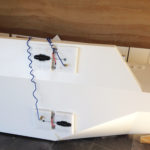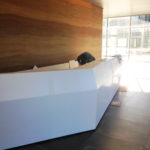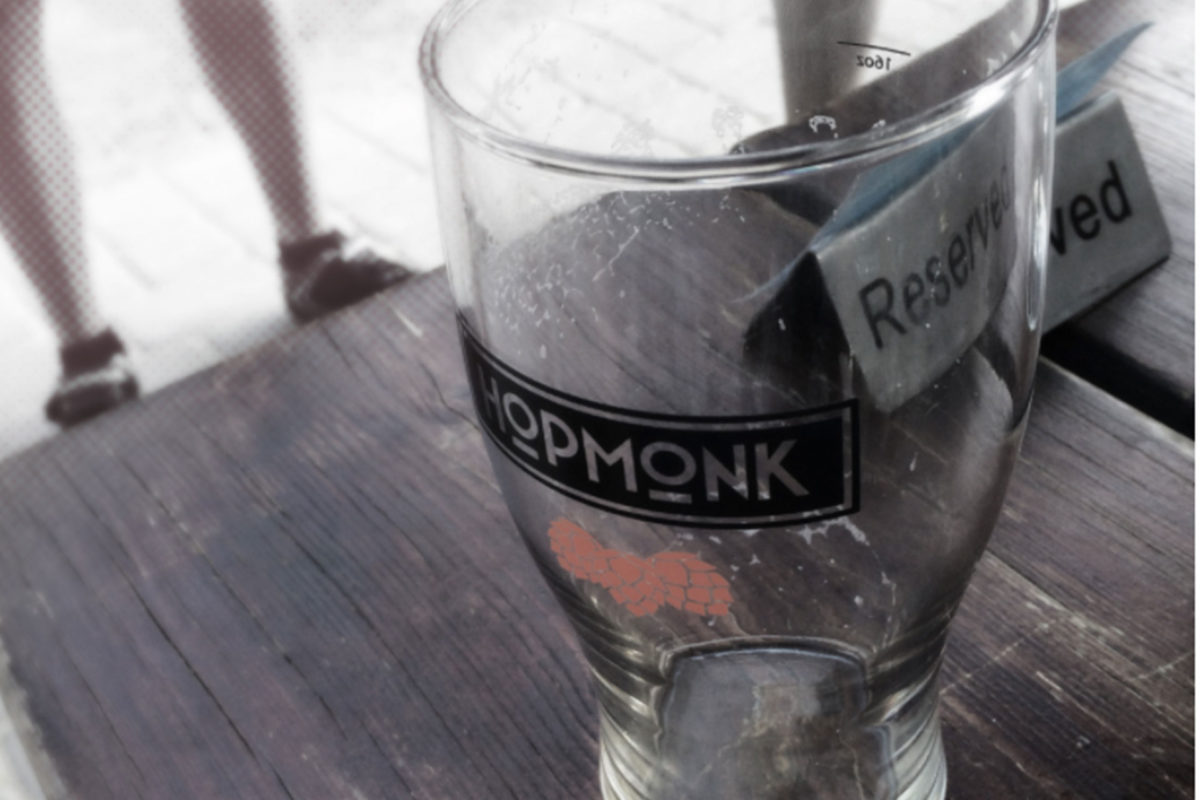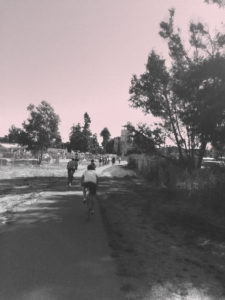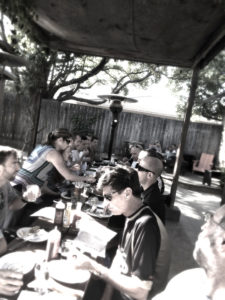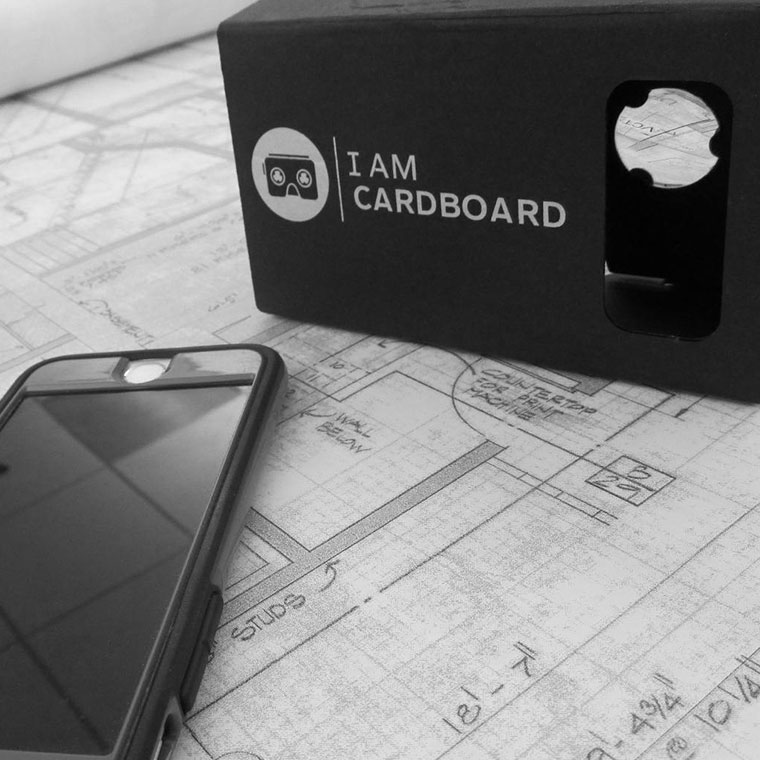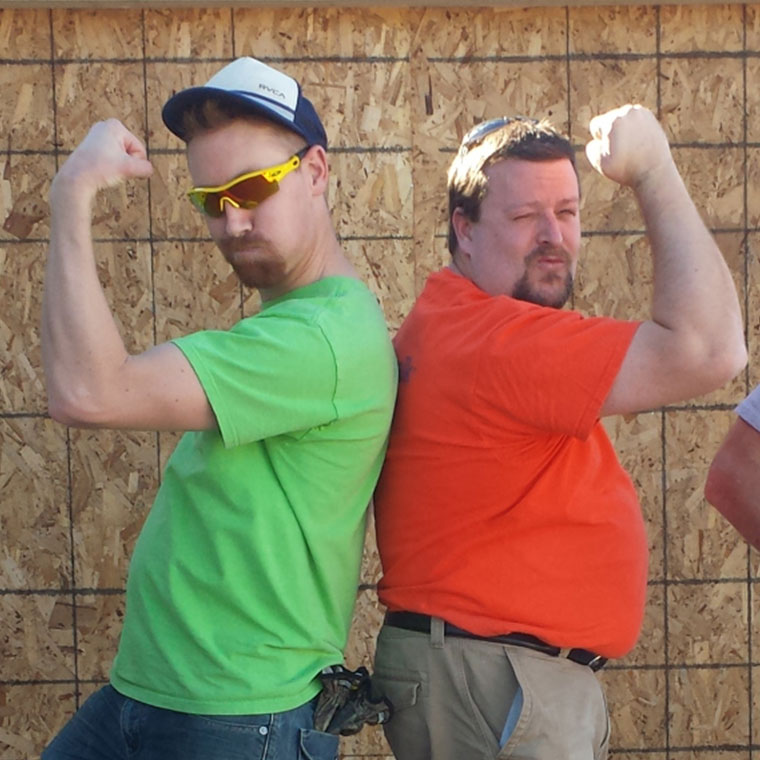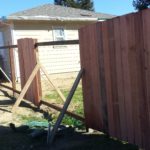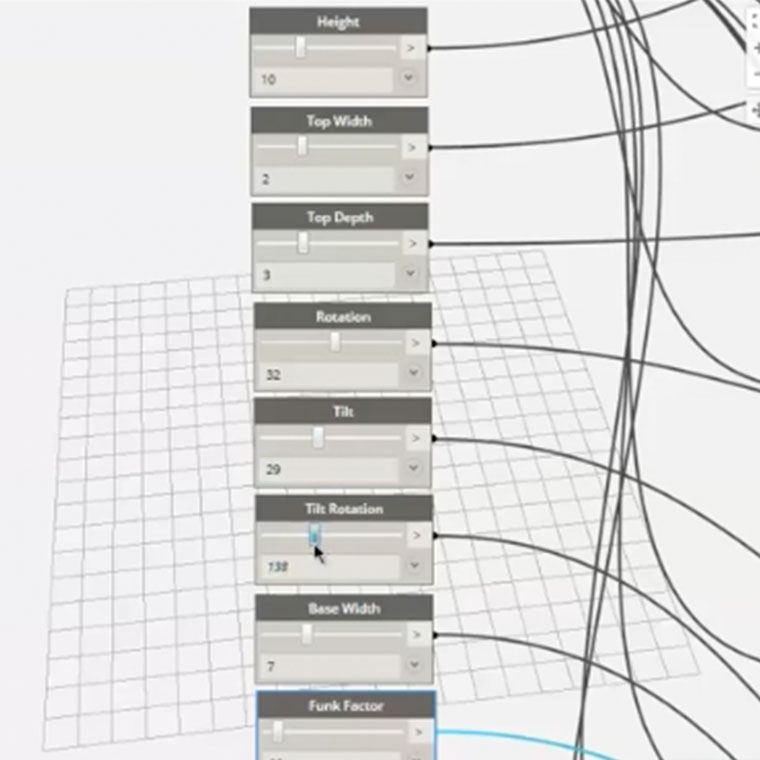Tag: Awesome
How to Play with Food
Recently the Redwood Empire Food Bank held its annual “Canstruction” event, which turns a food drive into a can sculpture competition. It was held at the Coddingtown Mall for a week of display and voting. Afterwards all the food was donated to our local food bank where it was dispersed into the 52 million pounds of food they donate to families of Sonoma County every year! We were able to raise donations for 2,889 pounds of food for the final design. To start this mission ZFA laid down the strong ground work and rallied the troops for a few fun filled weeks of designing and developing the sculpture. To help visualize and smooth the build day, the team leaders arrived with 3D drawings that were comparable to a Lego instruction book. The day of construction was so fun and rewarding we decided to share the experience. Hey mom, playing with your food is awesome!
Monolithic Desk Installed at American AgCredit Headquarters
As the TLCD Architecture designed American AgCredit Headquarters project nears completion, one of the most exciting details of the project is being installed – the main reception desk. Set in front of a rammed earth wall, this dramatic, 27-foot long monolithic white desk stands in striking contrast to the earthen wall behind it. The desk is manufactured in modules by Isomi in England, and is being installed by a crew from Connecticut. The crew glues the modules together, which are pulled tight by means of a motorized clamping system. The seams are filled and sanded, and the resulting monolithic structure is quite simply stunning. LED lighting will be installed at the base of the desk so that it will appear to float above the floor.
Grape Stomp Showdown: TLCD Architecture vs Summit Engineering
 On a warm fall weekend in wine country, the ultimate grape showdown took place between two Santa Rosa firms. TLCD Architecture challenged Summit Engineering to compete in the annual Harvest Fair Grape Stomp for bragging rights about who can generate the most juice in under 3 minutes.
On a warm fall weekend in wine country, the ultimate grape showdown took place between two Santa Rosa firms. TLCD Architecture challenged Summit Engineering to compete in the annual Harvest Fair Grape Stomp for bragging rights about who can generate the most juice in under 3 minutes.
Two teams from each firm prepared for this event by enduring a rigorous training regiment… mainly developing our core strength from laughing so hard. It turns out there is a real finesse to grape stomping as we learned the intricacies of being the “Stomper” or the “Swabby.” Foot size does not matter if you are the Stomper, it’s much more about the swirl and kick technique to move the juice towards the spout. The Swabby role benefitted from laser sharp focus and unusually long arms to funnel the grape juice into the jug.
While the teams from TLCD and Summit did not win the heat that day, we had a respectable amount of “wine juice weight” and went home proud. Purple feet and hands, a trophy t-shirt and the following video mark this historic showdown.
Bikes and Brews
What a great name for an event! When I saw the flier float around our office I immediatly grabbed it and knew I would have to roll. TLCD Architecture and many others were invited to join the annual ride to a nearby town of Sebastopol for a destination of good conversations, food and the celebration of bikes..and Beer.
Personally I’d never been to “Hopmonk”, but what a cool venue. We were greeted with ample bike parking for the whole group and a nice laid back outdoor seating area with a great draft list with many local micro’s. Fellow riders from ZFA and I were grubbing down on pulled pork sandwiches and the favorite 4 pack taco platter…amazing! According to local lore they have music there pretty regularly and I could see it being a pretty fun time. Living in Sonoma County (one of the worlds greatest bike and beer destinations) this local gathering was a great reminder of how lucky I am to get to enjoy this place from the speed and freedom of a bike. On the trip back to Santa Rosa, the ZFA crew kicked it into hyper speed as TLCD tried to keep up with the sprint… https://www.strava.com/segments/10029921/embed Not realizing I was riding with world class riders I now know that I will have to train for next year’s event, and hopefully grab a few notches higher on the list of riders. I will definitely be looking forward to next year’s ride, and thank you ZFA engineering for getting everyone together to enjoy our amazing place to live and work.
Revit Virtual Reality…What?!
Nick Diggins, Associate AIA
Recently, Carl, Phil and I watched a webinar about cloud rendering in Revit. I had seen this process emerge some months back and Carl and I briefly took a look at it. However, we quickly discovered a major drawback of not being able to use custom textures in the cloud. Out of the box texture mapping usually results in less than adequate representation of your design. Well guess what… you now can incorporate as many custom textures and material assets as you’d like!
Revit has been one of the slowest rendering engines out there, but I’ve always been impressed with its capabilities when it came to doing interior rendering for a native program. Time is a major factor in our business, and slow is a “no go”. A 12-20 hour rendering is not an uncommon thing with geometry heavy models, even with a render farm. Now with cloud rendering, we can send multiple views and let the magic and speed of the cloud to do its thing, while we keep working. An important thing to note is that renderings are vital for developing and sharing designs. Architects want to get their clients “into” the design, and a rendering can be great at starting to describe the space. Here’s the cool part, with Autodesk’s Cloud Rendering we are able to literally put the viewer in the space. It’s called stereo panorama (more about it here) and it’s transforming the way we use Revit with new levels of workflow for developing and sharing designs on the fly, not only with clients, but with each other.
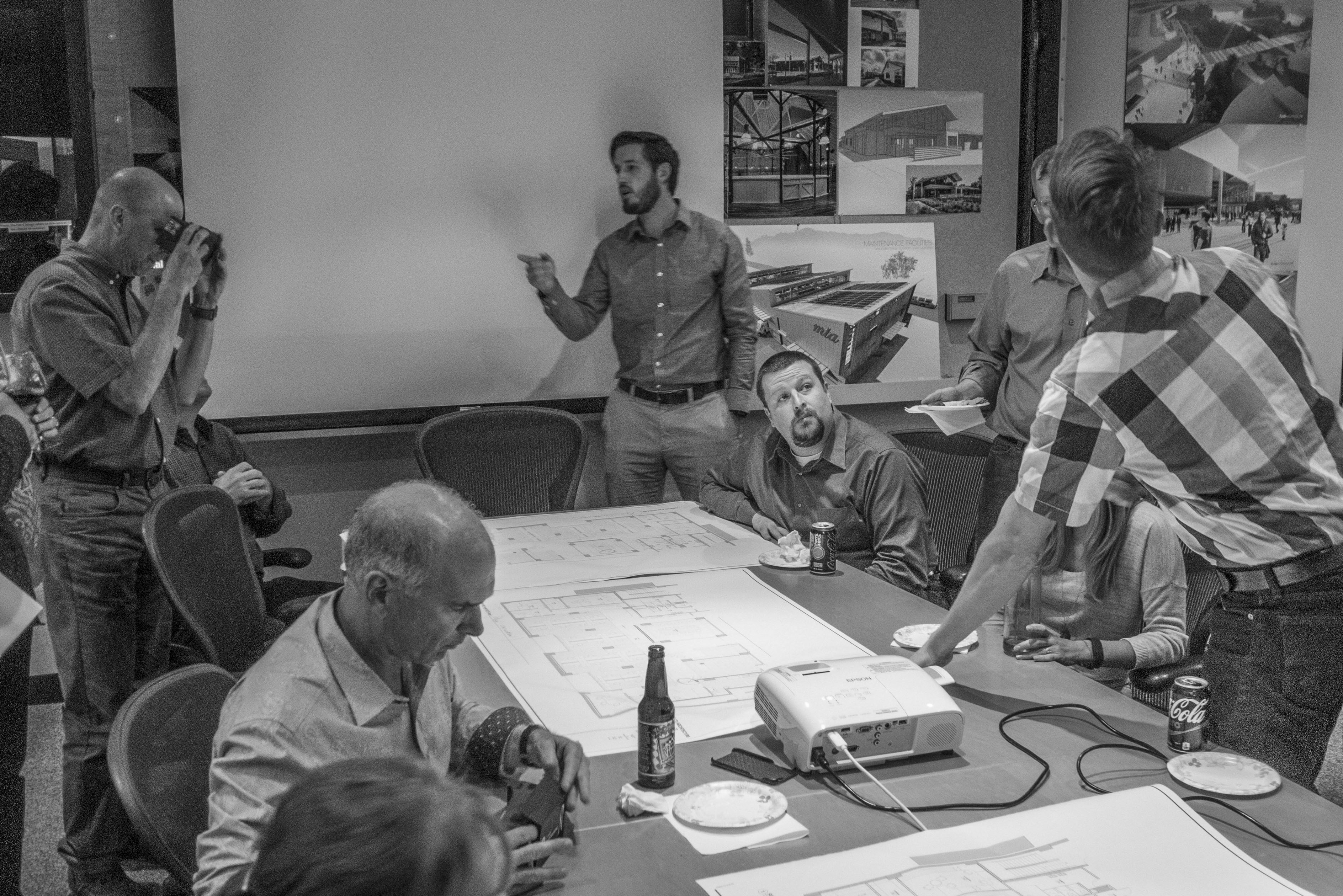 I decided to give it a go and developed several views of 3d panoramas of a current office interior design. I had less than 6 hours for developing the scene materials, lighting and final render time, and little room for production time. I was able to fire off multiple draft renders during the process and keep working the scene similar to our backburner setup for 3dsmax. This was during normal work hours though so backburner was unavailable. Normally this type of work would have been rendered over a weekend but that was not the goal of the exercise. Once I had the developed views uploaded in the cloud, I had Autodesk sprinkle some magic over the top of them. Here’s where we take it up a few more notches, by pairing Cloud Rendering with a couple of iphones and pieces of cardboard, suddenly we were immersing the whole office into the design. You can stand and look all the way around you, with total freedom – and with your body rather than a computer mouse. Amazing!
I decided to give it a go and developed several views of 3d panoramas of a current office interior design. I had less than 6 hours for developing the scene materials, lighting and final render time, and little room for production time. I was able to fire off multiple draft renders during the process and keep working the scene similar to our backburner setup for 3dsmax. This was during normal work hours though so backburner was unavailable. Normally this type of work would have been rendered over a weekend but that was not the goal of the exercise. Once I had the developed views uploaded in the cloud, I had Autodesk sprinkle some magic over the top of them. Here’s where we take it up a few more notches, by pairing Cloud Rendering with a couple of iphones and pieces of cardboard, suddenly we were immersing the whole office into the design. You can stand and look all the way around you, with total freedom – and with your body rather than a computer mouse. Amazing!
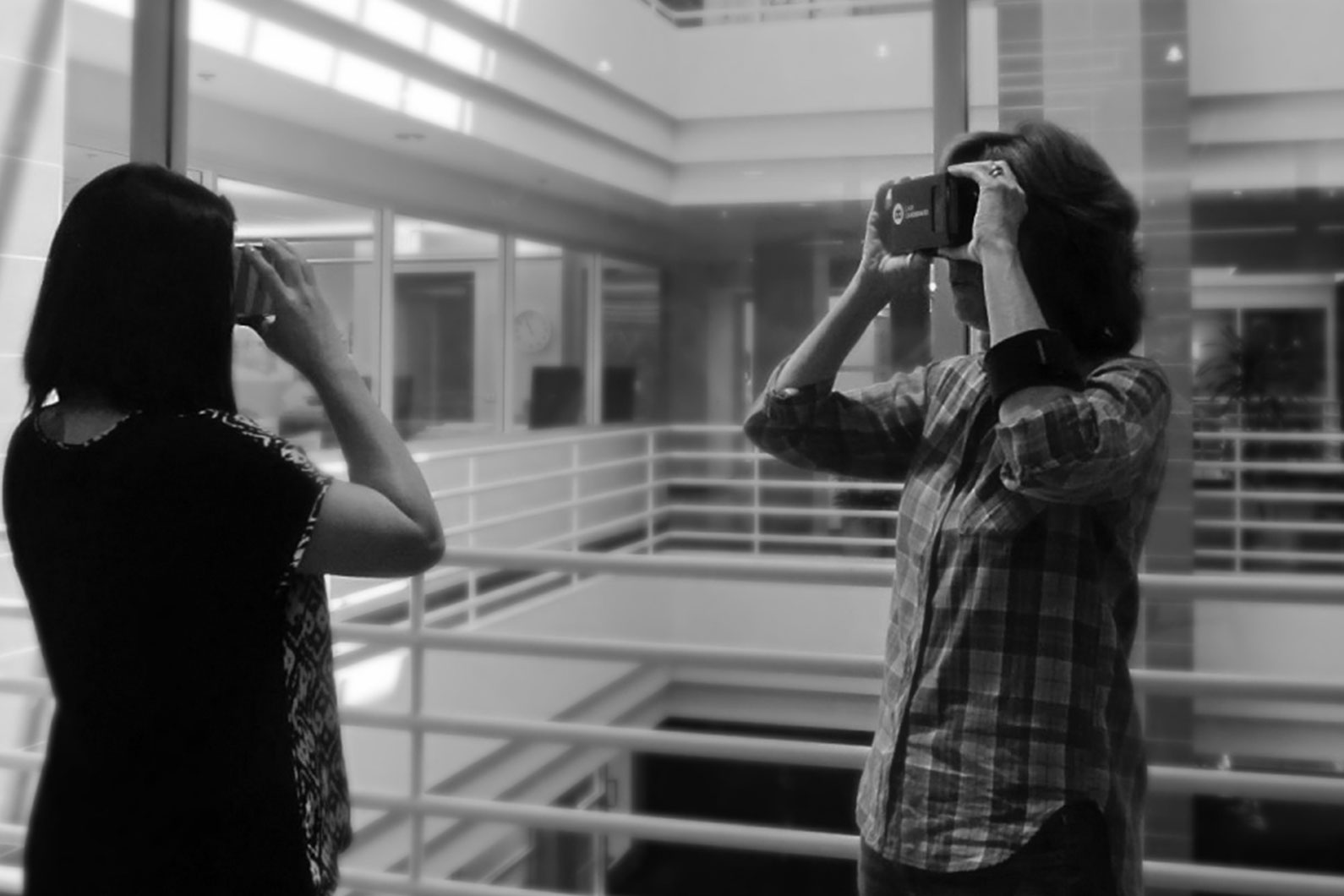 “Holy %&$#” was the phrase we heard from most of the office as first time viewers stood up to put on the goggles. It’s an amazing experience to witness the effect of going from sharing a 2D floor plan to actually putting people in the space. We are very excited for this new design horizon and you can bet TLCD Architecture is going to keep pushing it’s abilities and usability. We look forward to what Autodesk might throw our way in the near future…3D walkthroughs maybe? Who knows, but TLCD is ready and excited for what might be brewing.
“Holy %&$#” was the phrase we heard from most of the office as first time viewers stood up to put on the goggles. It’s an amazing experience to witness the effect of going from sharing a 2D floor plan to actually putting people in the space. We are very excited for this new design horizon and you can bet TLCD Architecture is going to keep pushing it’s abilities and usability. We look forward to what Autodesk might throw our way in the near future…3D walkthroughs maybe? Who knows, but TLCD is ready and excited for what might be brewing.
TLCD Getting Their Hands Dirty
You don’t often go out on a Saturday morning in January and think to yourself, “Did I need to put sunscreen on this morning?” But that’s what I found myself doing a couple Saturday’s ago with a crew of folks from the AIA Redwood Empire, including four from TLCD Architecture; Nick Diggins, Peter Levelle, Ron Starkey (Marina‘s husband), and myself. We spent the better part of that Saturday working on the second of five houses to be built at the Woodland Hills project in Cotati for Habitat for Humanity of Sonoma County. We were split into two groups, one crew building a wood fence and the other crew placing sand and pavers for the driveway. I think I speak for the whole group when I say we put in a lot of hard work, and we also had a lot of fun that day. It’s very rewarding at the end of the day to see the fruits of your labor in something as beautiful as a rustic driveway of pavers, or a fresh wood fence. It’s even more rewarding to know that your labor has helped provide a home for a deserving family in your community.
Rapid Prototyping: Captured on Video
This was the perfect project to take a test drive of Autodesk’s Dynamo for Revit and see what we could do. Dynamo is a new, exciting, visual programming software that is similar to Grasshopper for Rhino. We are actively beginning our exploration into computational design, and have already begun to see its benefits as we integrate Dynamo into TLCD’s BIM design process. In this quick exercise we were able to quickly develop eight different iterations from our design. Don’t miss the video and take a peek of us creating an addicting, generative design solution to share and discuss with the entire office and friends!
Check out an earlier blog post from December that started this conversation. Rapid Prototyping: Exploring Multiple Design Options






